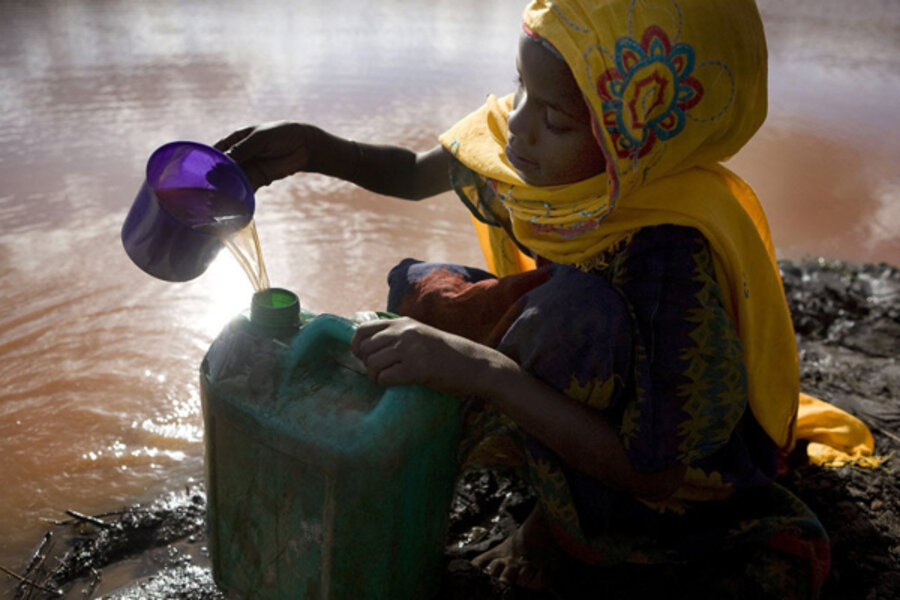Why 300 million more people are suddenly poor
Loading...
| Kigali, Rwanda
In November, 300 million more people around the world were suddenly poor – on paper, at least. The latest numbers on poverty from the United Nations, released Nov. 4, include a new measurement for poverty and reveal some surprises.
The Multidimensional Poverty Index (MPI) raises the number of poor by 21 percent, to more than 1.7 billion. According to the MPI, sub-Saharan Africa is still home to the greatest proportion of the world's poor, but more than half of the total number of poor lives in South Asia.
These numbers, and the new index that produced them, are part of the UN's annual Human Development Index (HDI), a statistical touchstone. It covers everything from the number of women who die in childbirth to how many people have Internet access and can sway decisions on US policy, influence where nonprofits spend money, and help determine where donors give.
For years, the HDI has set the standard for just how little a person has to live on to be considered poor. The answer? $1.25. But some researchers have long said income alone doesn't define poverty.
"There are some things money can't buy," says Sabina Alkire, cocreator of the index and director of the Oxford Poverty and Human Development Initiative, which launched the index in collaboration with the UN. "It might not buy electricity; it might not buy a public health system, or an education system."
Ms. Alkire's index looks at poverty more experientially. It uses existing survey data and categorizes households as poor if they lack three or more of the 10 poverty indicators, which are spread across health, education, and basic standards of living. "For the first time ever, it measures poverty by looking at the disadvantages poor people experience at the same time," she says.
Examining more than income changes the equation. It doubles the poor in Ethiopia, where 39 percent of people live on less than $1.25 a day. But 90 percent are "multidimensionally poor," or lacking at least three of the 10 indicators.
"The point is you can have rapid progress on the income poverty side without commensurate progress on other side," says Jeni Klugman, director and lead author of the Human Development Report, where the index debuted.
That's true even in the developed world. Hungary is categorized as a "high human development" country, and fewer than 2 percent of its people live on less than $1.25 a day. But under the MPI, that number triples.
Some specialists have raised objections to the new index, including the director of research at the World Bank, which publishes its own income measure for poverty. Among the criticisms is that the measure is still a single standard, even if it looks at many factors.
"If my bosses were to ask for my recommendation on using the MPI as a factor in allocating USAID resources among countries or programs, I would recommend against doing so," says Don Stillers, an economist for the US Agency for International Development, in an e-mail message. "Rather, I would emphasize the ongoing need to pay attention to evidence on each major dimension of poverty in each country we work in."
Duncan Green, head of research at Oxfam International and author of "From Poverty to Power," says the measurements are a mixed bag. "There's a wealth of single indices … that cram too much into one pot, but governments notice them, and they notice if they're doing better than their neighbors."
Aid workers say the MPI can help them spend their program money more efficiently – and argue to donors to give those dollars more persuasively.
In the aid world, "[W]e've known for a long time that while a country might look like it's doing fine on a national level, there are great disparities when you look below the surface," says Carlisle Levine, a senior technical adviser for CARE. "For us, it's added information that helps us back up our arguments for making the sort of investments we make."
But Mr. Green says the new measure doesn't go far enough. "The good thing is there's a better picture of what poverty is really about," he says. "But it's a crude measure in terms of how poor people talk about their lives."
Indeed, Alkire of HDI admits her index isn't perfect. She acknowledges that good data are hard to come by, and not all types of data that researchers want even exist. "These are messy numbers, and comparisons are fraught with danger," she says. But she also thinks her approach gives existing information more context and helps correct misperceptions.
"India alone has more people than the 37 sub-Saharan African countries," she says. Comparing countries with big-picture data treats each country equally, but that can literally change how each person inside the country is valued.
"I wanted to look at poor people with an equal weight wherever they lived," she says, "instead of letting the size of their country dictate how much we care about them."





